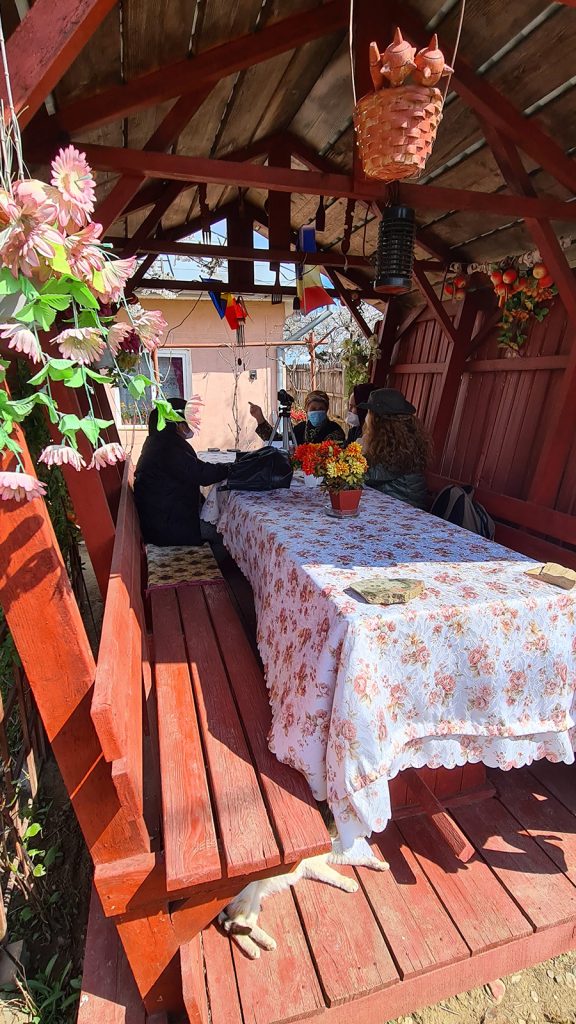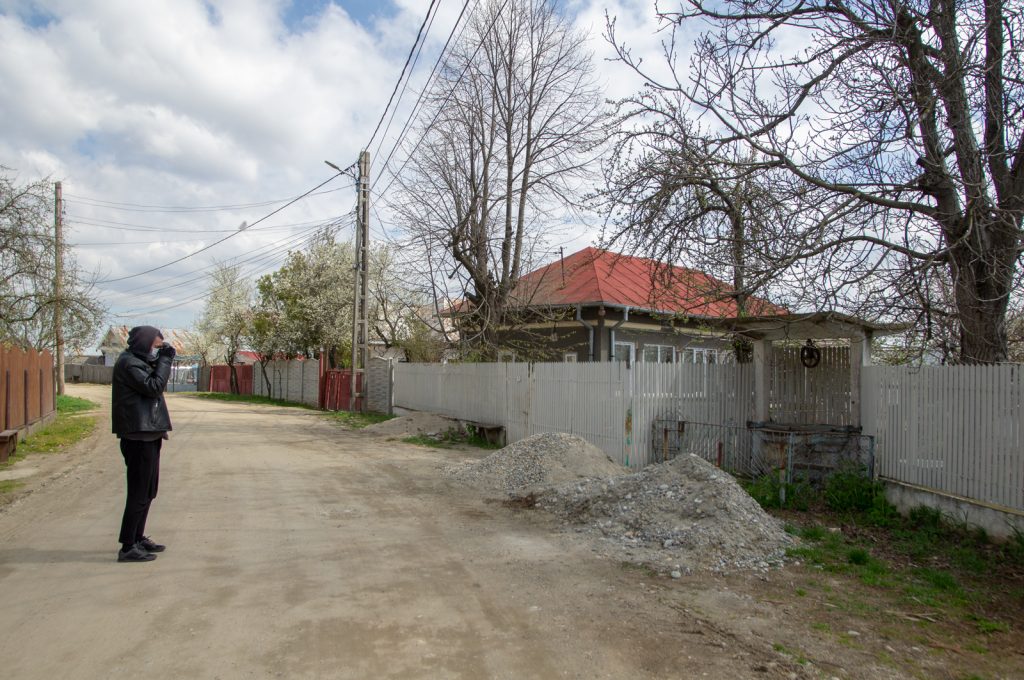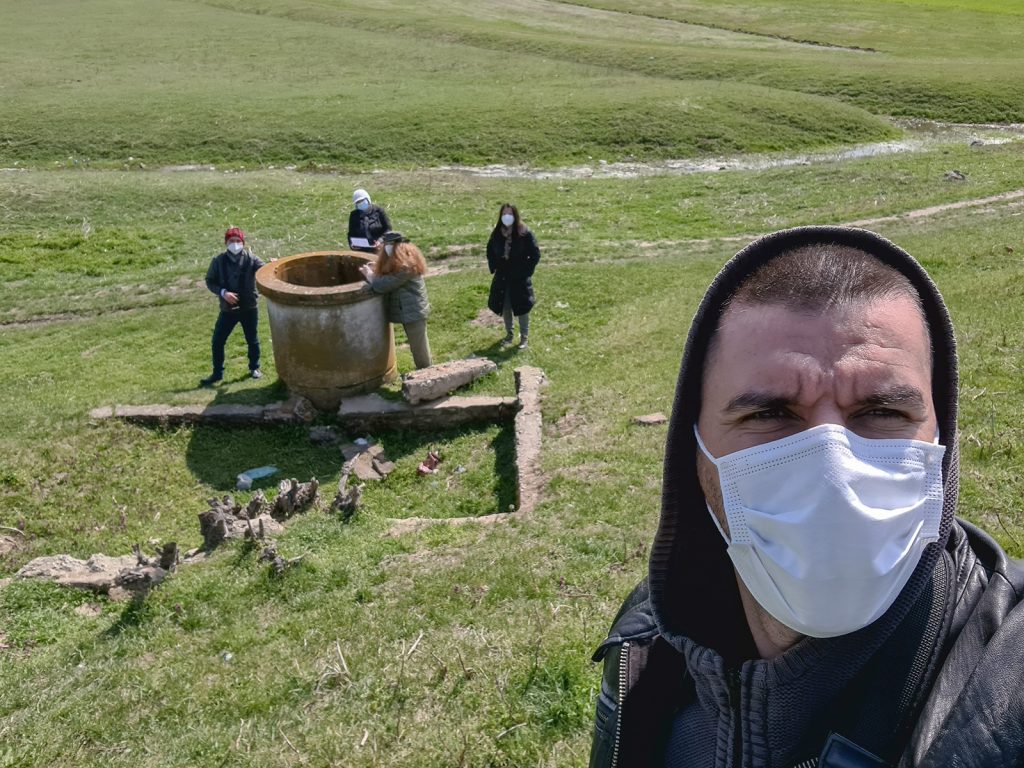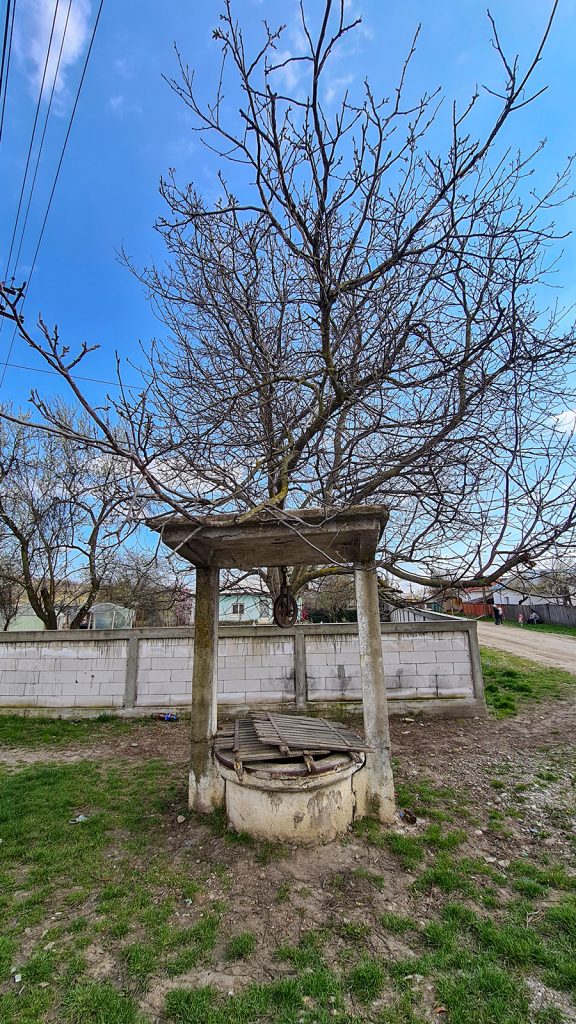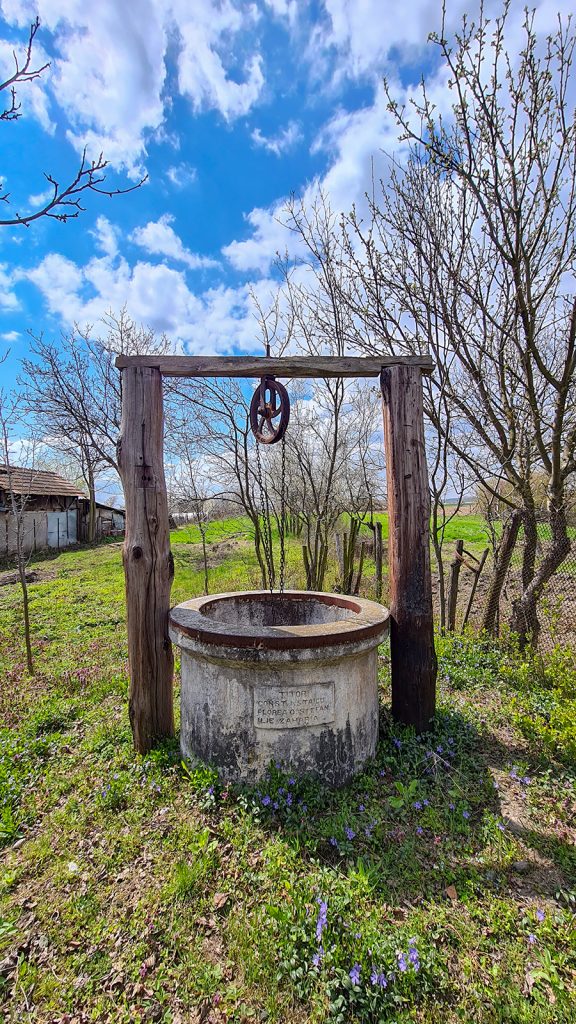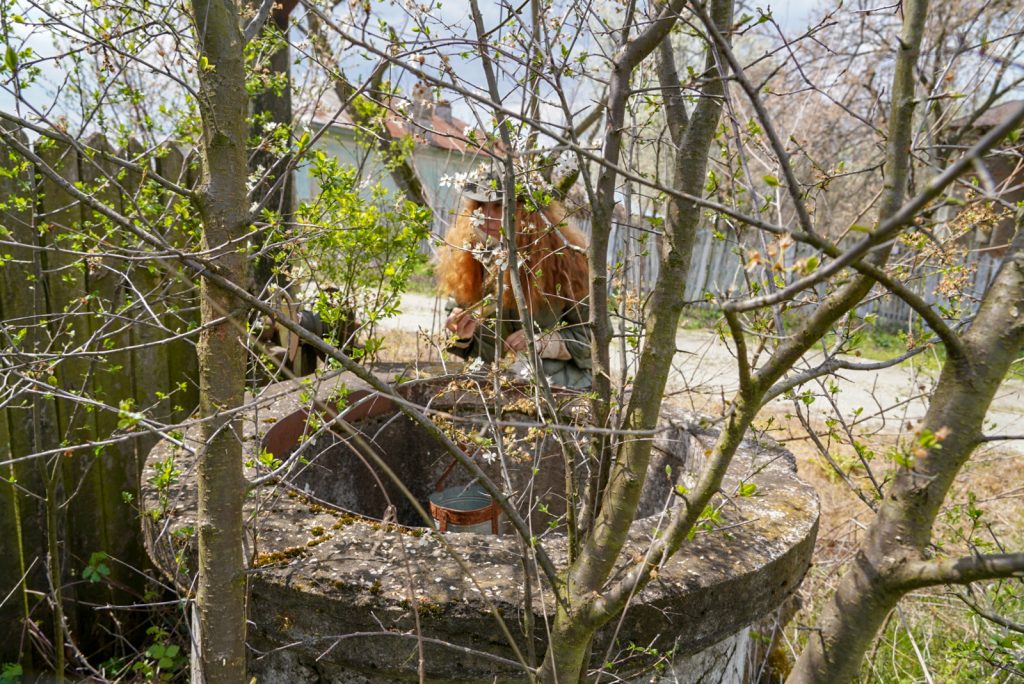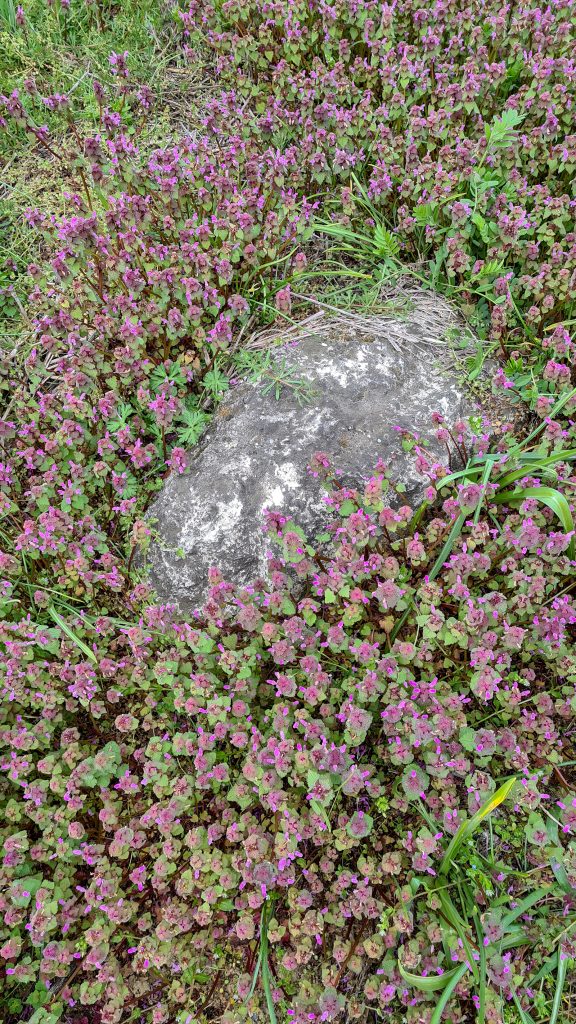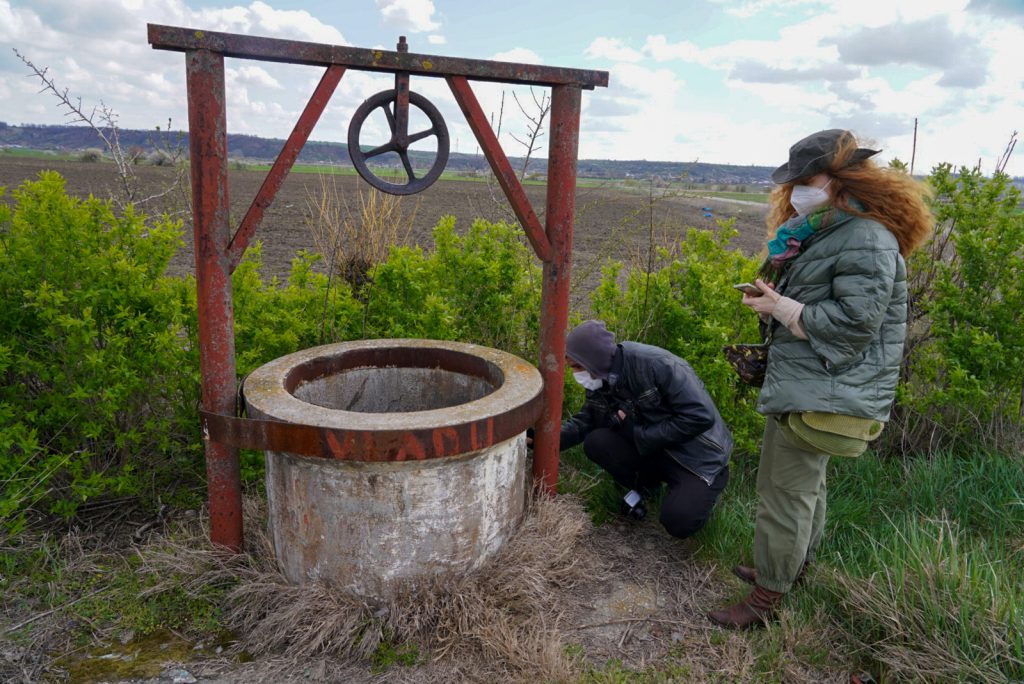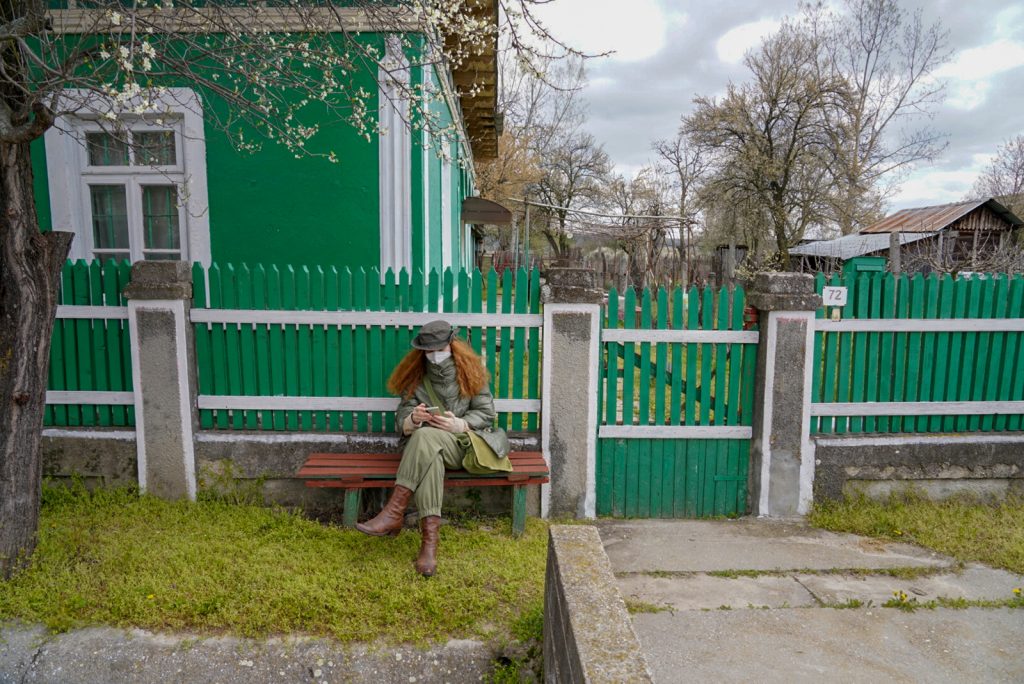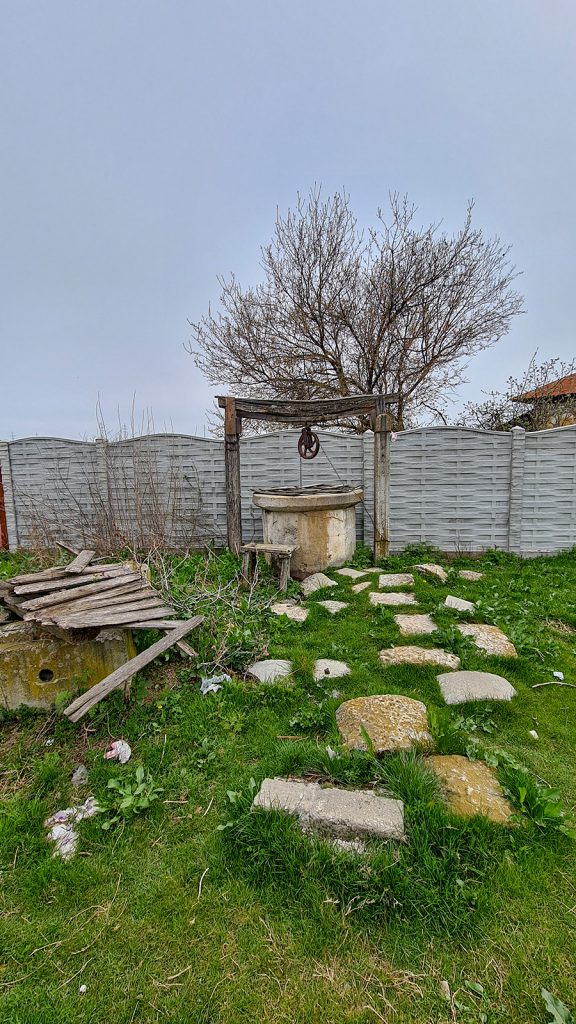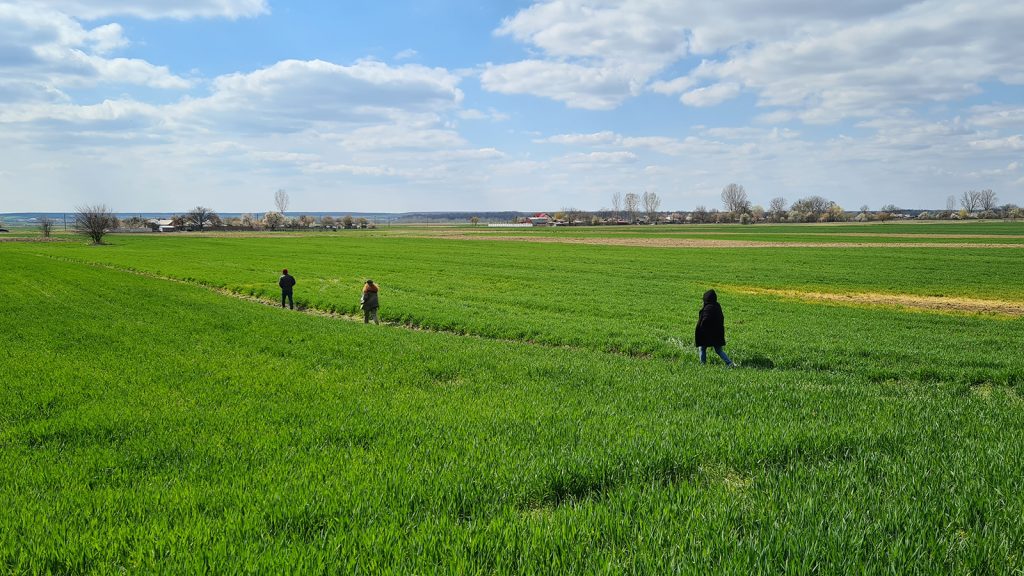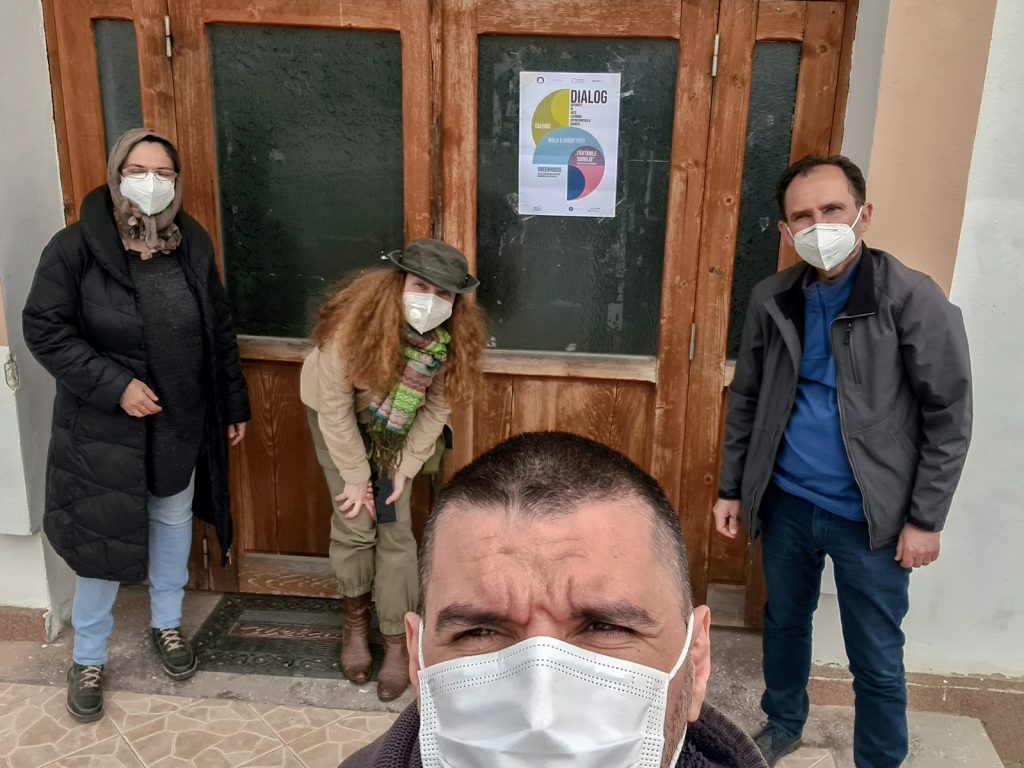
(EN)
Fountains of the South.
A few field notes.
The fieldwork was carried out between April 15-18, 2021 in the villages of the Bobicești municipality, Olt county.
Project team:
Cristian Bassa, photo documentation expert, editing and communication
Roxana Deca, expert documentary ethnographer / museologist
Dorian Delureanu, photo documentation expert and relations with the authorities
Cristina Irian, activity coordinator, anthropologist
The name of the Bobicești municipality comes from the local boiar (nobleman) called Bobicescu. Bobicești was a village of yeoman already attested in the 17th century.
The municipality is located in the western part of the Olt county, the former Romanați county, in the Caracal plain. The municipality lies at a distance of 36 km from Craiova and 7 km from Balş.
The villages of Mirila, Leotești, Belgun, Bobicești, Chintești, Comănești, Govora, Bechet are part of the municipality of Bobicești.
The team identified, together with the local community, the fountains and the traces of fountains described in the monographs on the place from 1979 and 2005. Over 50 community fountains or traces of fountains were identified, located and mapped.
Also, prof. Paula Bănică, author of the monograph on Bobicești municipality, told the team about the customs related to fountains such as wedding customs, winter customs (St. John), summer customs (Muma Pădurii – Mother Forest, Tatăl Soarelui – Father Sun).
Most fountains date from the interwar period, being originally built with wooden scales. Starting with the 1950-1960s, the mechanisms of the fountains were modified, the scale being replaced with a pulley system. The last fountains with scales have disappeared or have been transformed in the last 3-4 years.
Community fountains are located at crossroads, along roads in public space and in the fields. The fountains are used to supply water to the households and to the animals.
In recent years, following the introduction of the drinking water supply system in the municipality, many fountains have not been used therefore entered a process of deterioration. Also, some of them were “taken in” the local inhabitant’s yards, although still keeping public access to water, if the fountain was still functional. Other private fountains were discontinued.
The fieldwork currently reveals the decommissioning of fountains that, until 1989 or even sometimes until the end of the twentieth century, were used by the local community to ensure their running water needs.
But, even if today the fountain is often out of use, it retains its spiritual purpose, being still integrated in the rituals of passage such as “watering” the bride, described by the locals.
The initiative of the OMNIA PHOTO team, “Fountains of the South”, Bobicești, Olt, draws attention to the need to rediscover the fountains through a tourist circuit meant to keep alive the few functional fountains or to facilitate discovery of the history and the old fountains of that place.
DIALOG is a project funded by the EEA Grants 2014 – 2021 under the RO-CULTURA Program.
***
The Omnia Photo Association develops programs, projects and partnerships so as to support Romanian cultural heritage, historical photography and contemporary visual arts.
***
The EEA Grants represent the contribution of Iceland, Liechtenstein and Norway towards a green, competitive and inclusive Europe.
There are two overall objectives: reduction of economic and social disparities in Europe, and to strengthen bilateral relations between the donor countries and 15 EU countries in Central and Southern Europe and the Baltics.
The three donor countries cooperate closely with the EU through the Agreement on the European Economic Area (EEA). The donors have provided €3.3 billion through consecutive grant schemes between 1994 and 2014. For the period 2014-2021, the EEA Grants amount to €1.55 billion.
Learn more on www.eeagrants.org
The RO-CULTURA Program is implemented by the Ministry of Culture through the Project Management Unit and has as general objective the consolidation of economic and social development through cultural cooperation, cultural entrepreneurship, and cultural heritage management. The budget of the Program is 34 million Euros.
Learn more on: www.ro-cultura.ro/en

© OMNIA PHOTO 2021
(RO)
Fântânile Sudului.
Câteva note de teren.
Activitatea de teren a fost desfășurată în perioada 15-18 aprilie 2021 în satele din comuna Bobicești, Olt.
Echipa de proiect:
Cristian Bassa, expert documentare foto, editare și comunicare
Roxana Deca, expert documentare etnograf/muzeolog
Dorian Delureanu, expert documentare foto și legătura cu autoritățile
Cristina Irian, responsabil activitate, antropolog
Numele comunei Bobicești provine de la numele unui boier local, Bobicescu. Bobicești a fost un sat de moșneni atestat în secolul al XVII-lea.
Comuna este situată în partea de vest a județului Olt, fostul județ Romanați, în câmpia Caracalului. Comuna se află la o distanță de 36 de km de orașul Craiova, respectiv la 7 km de orașul Balș.
Din comuna Bobicești fac parte satele Mirila, Leotești, Belgun, Bobicești, Chintești, Comănești, Govora, Bechet.
Echipa a identificat pe teren împreună cu comunitatea locală fântânile și urmele de fântâni descrise în monografiile comunei din 1979 și 2005. Au fost identificate, localizate și cartografiate peste 50 de fântâni comunitare, urme de fântâni.
De asemenea, dna prof. Paula Bănică, autoarea monografiei comunei Bobicești a povestit echipei despre obiceiurile legate de fântâni precum obiceiurile de nuntă, obiceiurile de iarnă (Sf. Ion), obiceiurile de vară (Muma Pădurii, Tatăl Soarelui).
Cele mai multe fântâni datează din perioada interbelică, fiind inițial construite cu cumpănă de lemn. Începând din decada 1950-1960 sistemul de funcționare al fântânilor a fost modificat, cumpăna fiind înlocuită cu un sistem cu scripeți. Ultimele fântâni cu cumpănă au dispărut sau au fost transformate în ultimii 3-4 ani.
Fântânile comunitare sunt localizate la intersecții de drumuri, de-a lungul drumurilor în spațiul public și în câmp. Fântânile sunt folosite la alimentarea cu apă în gospodărie și pentru adăpatul animalelor.
În ultimii ani, în urma introducerii sistemului de alimentare cu apă potabilă în comună, multe fântâni nu au mai fost folosite, acestea intrând într-un proces de deteriorare. De asemenea, unele dintre acestea „au fost băgate în curte” de către locuitori, aceștia păstrând accesul public la apă, dacă fântâna a rămas funcțională. Alte fântâni aflate pe domeniul privat sunt dezafectate.
Incursiunea în teren relevă, la ora actuală, scoaterea din uz a fântânilor care, până în 1989 sau chiar uneori până la finalul secolului al XX-lea au fost folosite de comunitatea locală pentru asigurarea necesităților curente de apă.
Însă, chiar dacă astăzi este de multe ori scoasă din uz, fântâna își păstrează rosturile sale spirituale, fiind integrată încă în ritualurile de trecere precum „udatul” miresei, descris de către localnici.
Inițiativa echipei OMNIA PHOTO, Fântânile Sudului, Bobicești, Olt atrage atenția asupra necesității redescoperirii fântânilor printr-un circuit turistic menit să mențină în viață puținele fântâni funcționale sau să faciliteze cunoașterea istoriei locului și a fântânilor vechi specifice locului.
Proiect finanțat prin Granturile SEE 2014-2021 în cadrul Programului RO-CULTURA.
***
Asociația Omnia Photo desfășoară programe, proiecte și parteneriate în scopul sprijinirii patrimoniului cultural, fotografiei istorice și artelor vizuale contemporane din România.
***
Granturile SEE reprezintă contribuția Islandei, Principatului Liechtenstein și Regatului Norvegiei la reducerea disparităților economice și sociale în Spațiul Economic European și la consolidarea relațiilor bilaterale cu cele 15 state beneficiare din estul și sudul Europei și statele baltice.
Aceste mecanisme de finanțare sunt stabilite în baza Acordului privind Spațiul Economic European, ce reunește statele membre UE și Islanda, Liechtenstein și Norvegia ca parteneri egali pe piața internă.
În total, cele trei state au contribuit cu €3,3 miliarde între 1994 și 2014 și €1,55 miliarde pentru perioada de finanțare 2014-2021.
Mai multe detalii sunt disponibile pe: www.eeagrants.org și www.eeagrants.ro
***
Programul RO-CULTURA este implementat de Ministerul Culturii prin Unitatea de Management a Proiectului și are ca obiectiv general consolidarea dezvoltării economice și sociale prin cooperare culturală, antreprenoriat cultural și managementul patrimoniului cultural.
Bugetul Programului este de 34 milioane de euro.Mai multe detalii sunt disponibile pe: www.ro-cultura.ro

